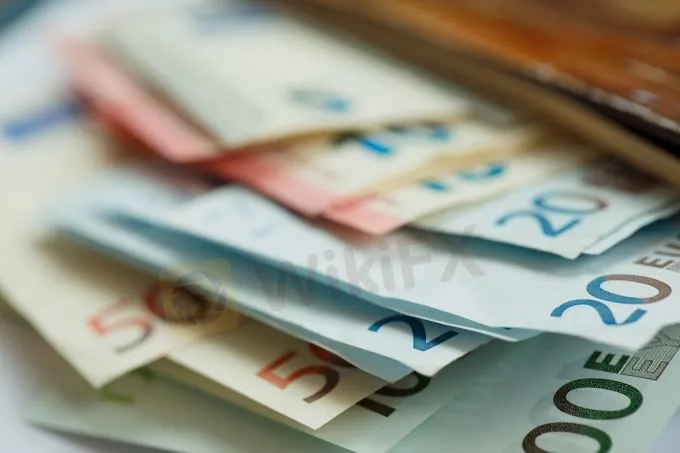简体中文
繁體中文
English
Pусский
日本語
ภาษาไทย
Tiếng Việt
Bahasa Indonesia
Español
हिन्दी
Filippiiniläinen
Français
Deutsch
Português
Türkçe
한국어
العربية
EUR/USD Technical Analysis: Russian War Affects Performance
Abstract:The EUR/USD exchange rate has entered this week's trading under pressure. The Euro will be at risk of sliding towards a key level of technical support around 1.1002 if Russian reserve selling or market risk aversion causes it to plunge below last week's low at 1.1107 at any time in the coming days. The euro-dollar pair tried to recover to the level of 1.1246 after the announcement of the start of negotiations between Russia and Ukraine, but the fears of its failure is the closest to its success, as military actions between the two sides exist despite the negotiation. The currency pair settled around the 1.1200 level, waiting for any new developments.
The EUR/USD exchange rate has entered this week's trading under pressure. The Euro will be at risk of sliding towards a key level of technical support around 1.1002 if Russian reserve selling or market risk aversion causes it to plunge below last week's low at 1.1107 at any time in the coming days. The euro-dollar pair tried to recover to the level of 1.1246 after the announcement of the start of negotiations between Russia and Ukraine, but the fears of its failure is the closest to its success, as military actions between the two sides exist despite the negotiation. The currency pair settled around the 1.1200 level, waiting for any new developments.
The euro enjoyed a strong rebound against the dollar on Friday as financial markets seemed to be singing a seemingly mild international sanctions response to Russia's attempted invasion of Ukraine. Saturday's strike from the Group of Seven industrialized nations was a game-changer. The Group of Seven nations and the European Union on Saturday announced what could be the “mother of all sanctions packages” including the expulsion of several Russian banks from the Association for Global Interbank Financial Telecommunication (SWIFT) and the freezing of Russian Central Bank (CBR) assets.
Under this package, important Russian banks will be excluded from the SWIFT system. “We will also ban transactions of the Russian Central Bank and freeze all of its assets, to prevent it from financing Putin's war,” European Commission President Ursula von der Leyen said on Sunday. The latest sanctions are big and heavy blows that fell directly on the body and economy of the Russian state but will have side effects and some of them may be felt in the markets from Monday if the full implementation of any asset freeze requires the implementation of legislative processes.
For example, it could be that a European Council vote is necessary to implement an EU asset freeze - with similar steps elsewhere in the G7 - which would create a window for the CBR to convert its reserves into alternative stores of value such as the Chinese renminbi and gold.
The Euro is the largest in the Russian Central Bank's reserve portfolio, and therefore is likely to bear the brunt of any scenario where it has the opportunity to either support the rising ruble or transfer its reserves to other currencies, which will be bearish for the euro-dollar in the short term. “Risks tend to underperform the euro this week given the escalation of European tensions with Russia,” says Joseph Caporso, head of international economics at the Commonwealth Bank of Australia.
He added, “While markets were not anticipating an imminent rate hike by the European Central Bank, there is a market risk for a tightening in late 2022 and fade and affect the EUR/USD pair. In our view, economic risks to the downside open the way for EUR/USD to test the 1.1106 support level.” With last week's lows around 1.1107 aside, there are few technical hurdles to stop any further declines by the Euro once below there until it hits the 1.1002 level, which marks the 78.6% Fibonacci retracement of the 2020 recovery.
According to the technical analysis of the pair: Despite the recent performance of the EUR/USD currency pair, the general trend is still bearish. As I mentioned before, the euro gains will remain subject to sale as long as the Russian war and its negative effects on the eurozone economy and the world. Stability below the support 1.1200 pushes the bears to move further downwards, according to the trend, so the next support areas are 1.1110, then the psychological support 1.1000. On the upside, and according to the performance on the daily chart, the closest most important resistance levels are 1.1320 and 1.1400.
The euro-dollar currency pair will be affected today by the developments of the Russian war and the announcement of the industrial PMI readings for the eurozone economies, and then the US ISM manufacturing PMI reading

Disclaimer:
The views in this article only represent the author's personal views, and do not constitute investment advice on this platform. This platform does not guarantee the accuracy, completeness and timeliness of the information in the article, and will not be liable for any loss caused by the use of or reliance on the information in the article.
WikiFX Broker
Latest News
Why Even the Highly Educated Fall Victim to Investment Scams?
Warning Against Globalmarketsbull & Cryptclubmarket
ACY Securities Expands Global Footprint with South Africa Acquisition
BSP Shuts Down Uno Forex Over Serious AML Violations
Rupee gains against Euro
Axi Bids AUD 52M to Acquire Low-Cost Broker SelfWealth, Outbidding Competitor Bell Financial
Crypto Influencer's Body Found Months After Kidnapping
Exness: Revolutionizing Trading with Cutting-Edge Platforms
Currency Calculator


